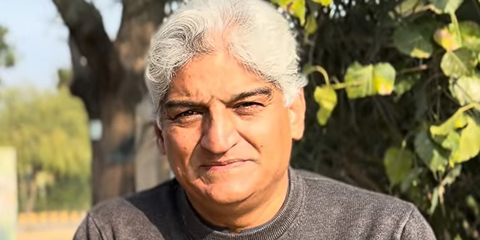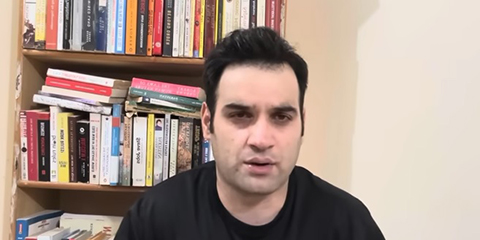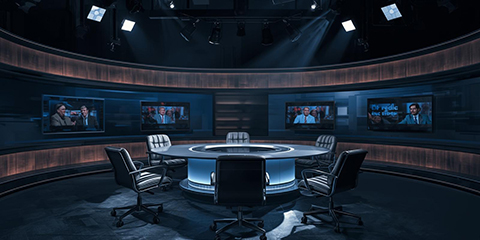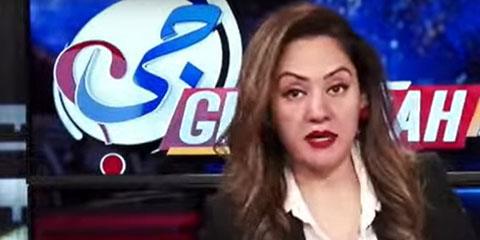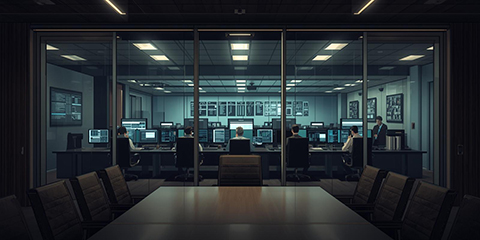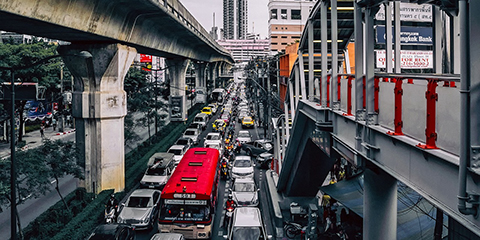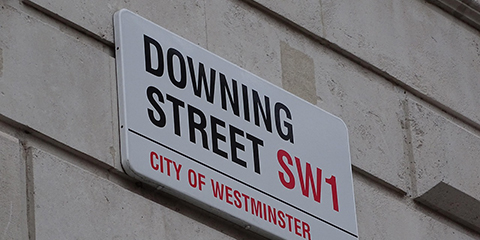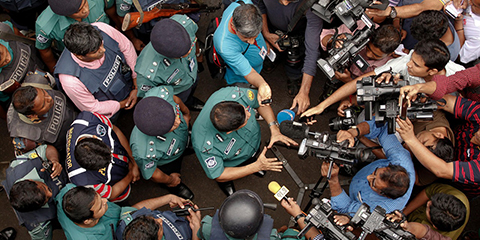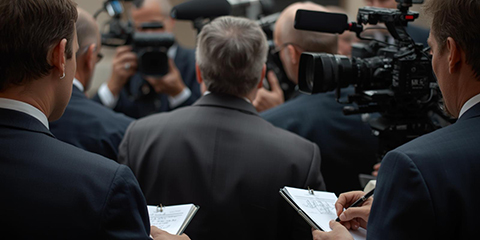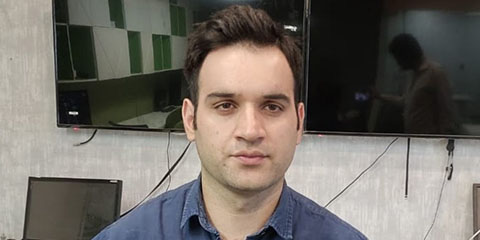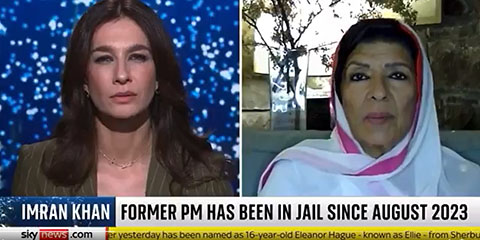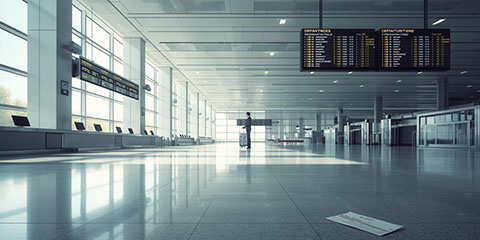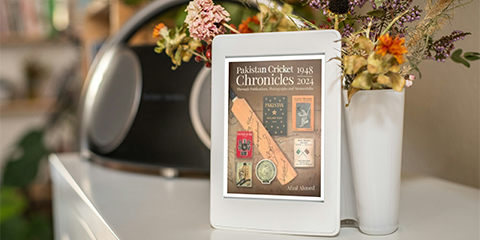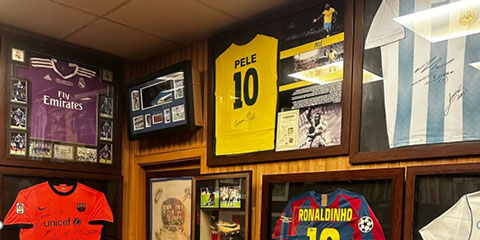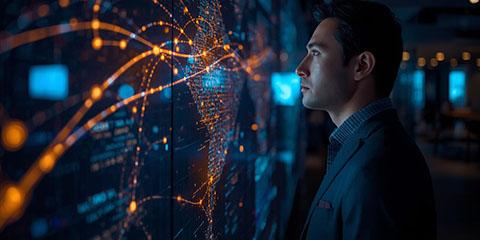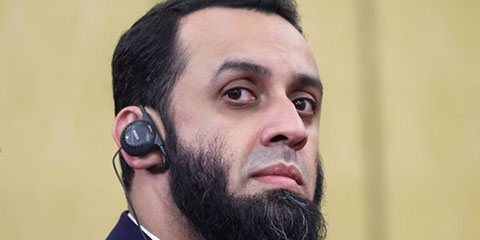PML-N, PTI had highest representation in eight TV talk shows in October 2017: Study
JournalismPakistan.com | Published 7 years ago
Join our WhatsApp channel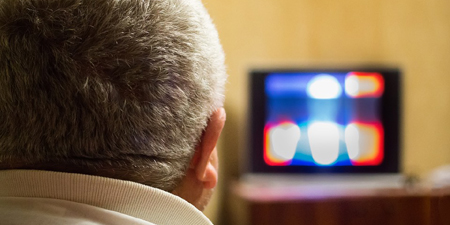
ISLAMABAD – According to a Monthly Research Study conducted by Gallup & Gilani Pakistan, in the eight television talk shows analyzed during October 2017, PML-N and PTI had the highest representation (49% and 24% respectively).
‘Law’ was the most popular topic under discussion (30%), and the majority of guests were politicians (76%) and females made up only 10% of the total guests.
A press release said Gallup & Gilani Pakistan’s researchers undertook content analysis of eight popular current events talk shows (Off the Record, Capital Talk, Meray Mutabiq, Sawal Yeh Hai, News Eye, Aapas Ki Baat, Nadeem Malik Live and Tonight with Fareeha). These consisted of 118 episodes aired on different cable television networks during October 2017. The topics discussed in these shows were categorized into seven broad categories: ‘Economy’, ‘Governance’, ‘Law’, ‘Politics’, ‘Media’, ‘Security’ and ‘Miscellaneous’. Issues that were discussed less frequently, for example, sports and socio-cultural subjects, have been included in the ‘Miscellaneous’ category.
Average number of guests: Four guests per episode
On average four guests appeared per episode for each show in October 2017. While some guests were frequently invited on different talk shows, overall there were 120 unique guests out of a total of 418 guests in the 118 episodes analyzed for October.
Background of guests Invited: Politicians continue to dominate
Furthermore, in October, the majority of guests were politicians (76%), followed by academics and experts like defense analysts and professors (14%). Guests from the media, such as journalists, anchors etc. comprised 4% of guests, followed by the judiciary (judges/lawyers) at 3%. The share of military personnel was at 2% and miscellaneous occupations at 1%.
Air-time share of political parties: PML-N and PTI at the top
In October 2017, the maximum representation amongst political parties was at 49% for Pakistan Muslim League-Nawaz (PML-N), and 24% for Pakistan Tehreek-e-Insaaf (PTI). They are followed by Pakistan Peoples Party at 16%. Awami Muslim League (AML) occupied fourth place with 3% of airtime, followed by Muttahida Quami Movement (MQM), Awami National Party (ANP), and independents at 2% each. The remaining airtime was constituted by Pak Sar Zameen Party (PSP), Pakistan Awami Tehrik (PAT), the Pakistan Muslim League (Quaid-e-Azam Group) (PML-Q), and various other parties. The representation in airtime is somewhat proportionate to the votes acquired by these parties in the 2013 Elections.
Most discussed topic in talk shows: Politics
In the month of October, Law took center stage in talk shows (30%). It was followed by discussions on Politics (29%) and Governance (19%). Security-related issues were conversed on 13% of the time on these talk shows. Media related subjects occupied 6% of airtime. While economic and miscellaneous matters comprised barely 2% of the talk time each.
Most Discussed Topics within Law: Khatam-e-Naboowat Laws, NAB Investigation on Ishaq Dar’s corruption charges, Imran Khan and Jahangir Tareen’s disqualification and Post-Panama Case references.
In October 2017, most of the discussions under the law were related to the JIT/Panama Case against Nawaz Sharif (29%). This was followed by discussions on Electoral Reforms and Imran Khan & Jahangir Tareen’s disqualification (15%each). Eleven percent focused on NAB Investigation into Ishaq Dar’s corruption charges. Discussions relating to Khatam-e-Naboowat Laws took 5% of the airtime. These were followed by discussions on the investigative committee on Ayesha Gulalai’s allegations against Imran Khan, Dr. Asim Corruption Case and (2%), PM Shahid Khaqan Abbasi/LNG case corruption at 2% each.
Most Discussed Topics within Politics: The allegations by Imran Khan & Shaikh Rasheed, strife between the Sharif family/PML-N, MQM-PSP Alliance, and Capt. Safdar’s speech in the National Assembly
The most frequently discussed issue under Politics was the allegations/criticism by Imran Khan & Sheikh Rashid (11%). Seventeen percent of airtime was devoted to decisions on the possibility of strife between Shahbaz Sharif-Maryam Nawaz and Chaudhary Nisar. Seven percent each of airtime was given respectively to PSP-MQM alliance and, and Captain Safdar’s speech in the National Assembly. Six percent discussed the politics of PPP. The remaining airtime was devoted to other political issues.
Commentary by Gallup & Gilani Pakistan Media Research Consultancy Team:
The analysis of talk shows during October shows a return of the dominance of Law in the media landscape.
The ranking of Politics, Law, Governance and Security may vary from month to month, but it is usually these three domains that remain prominent – this month Law, Politics, and Security bagged the top three positions in terms of airtime on these talk shows.
Law was at center stage of discussion in October – specifically in regard to the Panama Leaks/JIT verdict, Imran Khan & Jahangir Tareen’s disqualification case and the NAB inquiry committee against Ishaq Dar.
It is important to note that since the Panama Leaks case is being discussed from political, legal and governance perspectives, there is sometimes a very fine line between these categories, and most national issues cannot be explored solely through the perspective of one domain.
Furthermore, females have always been underrepresented on talk shows (June – Males 92% Females 8%, August – Males 84% Females 16%). In October, females had 10% representation, a decline of 6% since August 2017. These figures are highly skewed and men have been historically outnumbering the female voices on these talk shows. Talk show hosts along with the management cadre need to put in extra efforts in order to ensure fairer representation for women. However, the generally low representation of females on talk shows can also be due to the lower participation of women in the political sphere in general.
Trends in political representation
This study is part of a larger project hence a comparison of current trends with past ones is helpful in detecting new developments. Comparison of participation of political parties in talk shows reveals that PPP, PML-N, and PTI were once again the three parties with the highest representation on talk shows during August. Between August and October, PML-N’s representation has risen from 28% to 49%; PTI’s share has risen from 22% to 24%, and PPP’s representation has fallen by 14%.
This distribution and the changes in rankings over these months indicate that media in Pakistan is independent to a large extent and there is little if any, bias towards propagating the views of a single political party. The fluctuations in representation may be linked to the parties’ role in or views on the prevailing situation in the nation, their performance, level of activity in the political domain or their own choices in terms of participation in the media for that particular month. However, the consistently high representation of the same three parties over these months does point to limited airtime occupied by other parties.
Trends in topics discussed
A topic-wise comparison of June, August and October 2017 reveals that relative to other topics, talk shows usually give most airtime to Politics, Security, Law, and Governance, as was seen in June through October. However, recent focus has specifically been on Law, Politics, and Security in October. There has been an increase of 2% in the discussion on governance between June and October 2017. This can be attributed to an increased interest in running the country post the disqualification of its prime minister. Discussion on law has remained stagnant at 30% in the month of October. Twenty-nine percent of legal discussions and 36% of political discussions revolved around the Panama Case/PML N politics which has drawn public, legal and political attention. The issue has been given the largest portion of airtime under Law and Politics.
Airtime devoted to Security has risen since June from 10% to 30% due to a decrease in the general stability over the months.
While internal political and security debates have continued, other issues continue to be sidelined. Economy and Media continue to be underrepresented. Pakistan is a nation whose economy has a pressing need for revival, where media is an important source of information for the public and where bad governance and discrimination is the cause of frequent discontentment from the masses. The increased focus on law has continued this process of revival. However, this change in trend is attributed to Pakistan’s current affairs, and focus on political issues will continue to increase until the 2018 Elections.
In general economic progress (86%) and debates on rising poverty and inflation (14%) in the country dominated economic discussions. However, the Economy’s importance has not been emphasized enough (2%). For a developing economy like Pakistan with chronic economic issues, it is problematic to see the economy being neglected within public agenda. Discussions on the media, too, remain low (6%), a phenomenon that should be investigated, since it is one of the most influential institutions in Pakistan.
Trends in background of guests
A comparison of the background of guests between June and October illustrates that politicians have increasingly dominated the scene throughout these months, (June 49%; August 75%, October 76%). They have a share of nearly half in June and three-fourth in August and October. Representation of media has declined between June and October (10% to 4%) while guests from academia have risen by 1%. The share of judicial guests also decreased to 3% in October, which demonstrates a seven-point decrease from June. Representation of researchers/authors has exhibited a steady negligible share. Similarly, representation of religious guests still remains relatively low. Share for the military, previously constant since February has also risen to 2%.



